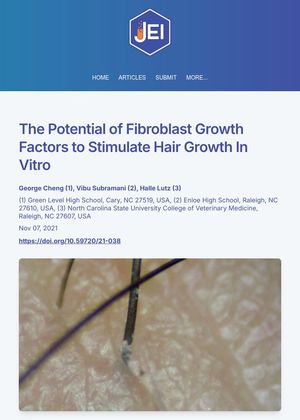The Potential of Fibroblast Growth Factors to Stimulate Hair Growth In Vitro
January 2021

TLDR Some fibroblast growth factors may promote hair growth similarly to minoxidil and could potentially treat hair loss.
The study from 2021 investigated the potential of fibroblast growth factors (FGFs) as an alternative to minoxidil for treating androgenic alopecia (AGA), a common form of hair loss. Four types of FGFs (FGF1, FGF2, FGF10, and FGF21) were tested on isolated primary mouse hair follicle dermal papilla (DP) cells, and compared to minoxidil. The results showed that several FGFs promoted DP cell proliferation, similar to minoxidil, even in the absence of a vascular system. Additionally, DP cells cultured in FGFs exhibited a more organized cytoskeleton compared to those cultured with minoxidil, indicating potential benefits of FGFs for cellular health. The researchers hypothesized that FGFs could stimulate hair growth and treat AGA.


